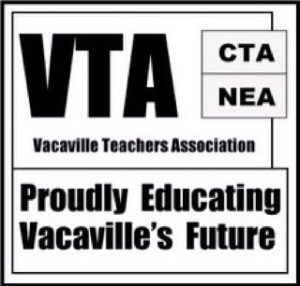A child’s formal education is shaped by her relationship with her teachers. As in all highly skilled professions, from medicine to engineering, each teacher’s education should include research-based knowledge of content and pedagogy and be long on immersion, mentoring, and practicum. Every educator should experience the opportunity to find one’s bearings, reinforce concepts, perform management techniques, and dialogue about what works best for specific students in an individual classroom.
A teaching residency provides the ideal environment for a teacher candidate to hone these critical skills in. California State University, Chico has one of only 24 federally-funded Master of Arts in Education residency programs in the United States.
The School of Education at CSU Chico was also one of just 24 recipients of a prestigious $6.4 million Teacher Quality Partnership Grant. The PRISMS Project (Promoting Rural Improvement in Secondary Mathematics and Science) is intended to increase the number of well-qualified teachers in science, technology, engineering, and mathematics (STEM) throughout rural areas, a specific focus of Chico State’s Residency in Secondary Education (RiSE).
In addition to increasing the pool of STEM teachers in the region, Chico’s PRISMS Project prepares teachers to effectively implement the Common Core and Next Generation Science Standards, improve rural student performance in math and science, increase the number of college-bound students from all ethnic groups in the region, and fuel interest in STEM-related majors among those students.
 The innovative RiSE Program resembles a medical residency. An experienced teacher oversees and mentors each teacher resident during the 12- to 18-month master’s degree program.
The innovative RiSE Program resembles a medical residency. An experienced teacher oversees and mentors each teacher resident during the 12- to 18-month master’s degree program.
Each resident and mentor form a partnership in order to discuss daily successes and areas of improvement, craft lesson plans and provide instruction, and facilitate teacher-student and teacher-parent conversations. The new teacher graduates with an M.A. in Education and a California teacher certification in mathematics, science, English, or special education.
RiSE and its predecessor, the Rural Teacher Residency Program (RTR), begun in 2009, were developed around a co-teaching model that allows more teacher-student interaction, a critical component of student success, especially in STEM curricula and special education.
By working with a peer or mentor, co-teachers are able to reflect on coursework and methodology in real time, an invaluable daily resource that enhances the first-year experience and often leads to greater teacher retention over time. CSU Chico, having recognized the impressive success of the co-teaching model, created a three-year plan to fully implement it across education disciplines in 2017. A pilot Co-Teaching Online Workshop has also become a standard resource.
With the support of mentors, RiSE residents develop a classroom inquiry plan and conduct ongoing research in their residency classrooms. Each resident presents the results of this action research, which may include classroom problem-solving, creating strategies, and generally improving teaching practices, in a research paper and poster forum.
The cohort structure of the RiSE Program provides opportunities for residents to benefit greatly from their peers, other new educators with whom they can bounce lesson plan ideas back and forth, discuss educational philosophy, and offer general support in their progress toward the same goal. In addition, the School of Education provides an ongoing forum in education that includes a quarterly newsletter, workshops, North State and California teacher conferences and summits, and a dynamic speaker series. CSU Chico’s School of Education is often looked to for thoughtful leadership, given the rarity of Master of Arts in Education residency programs and its reputation for rural-education expertise.
RiSE administrators understand that an accelerated residency program can financially challenge students, as the program’s intensified setting precludes secondary employment. Students can receive a living stipend of up to $25,000 to offset this obstacle. The School of Education and the college Grants Office also explore financial aid, grant, and scholarship options for every qualified student.
For example, the Mathematics and Science Teacher Initiative (MSTI) provides multi-year scholarship awards to math and science undergraduates and teacher candidates totaling upward of $10,000 per student. In addition, the Collaborative for Low-Incidence Personnel Preparation (CLIPP) Grant provides special education candidates with over $8,000 to cover the costs of tuition and books during the program. These awards are just two examples of wide-ranging financial incentives to pursue a RiSE master’s degree and credential at CSU Chico.
Improving the quality and number of STEM teachers became a federal mandate in 2011, when President Barack Obama, during his State of the Union address, set the goal of preparing and hiring 100,000 new math and science teachers within ten years. Graduates of RiSE at CSU Chico enter their first-year teaching jobs with the advantage of second-year teacher knowledge and skills. Poised with a lifelong mentor and the support of professor and peer relationships, graduates of RiSE enter the community prepared to make a difference in the lives of their students and, ultimately, in our society.





